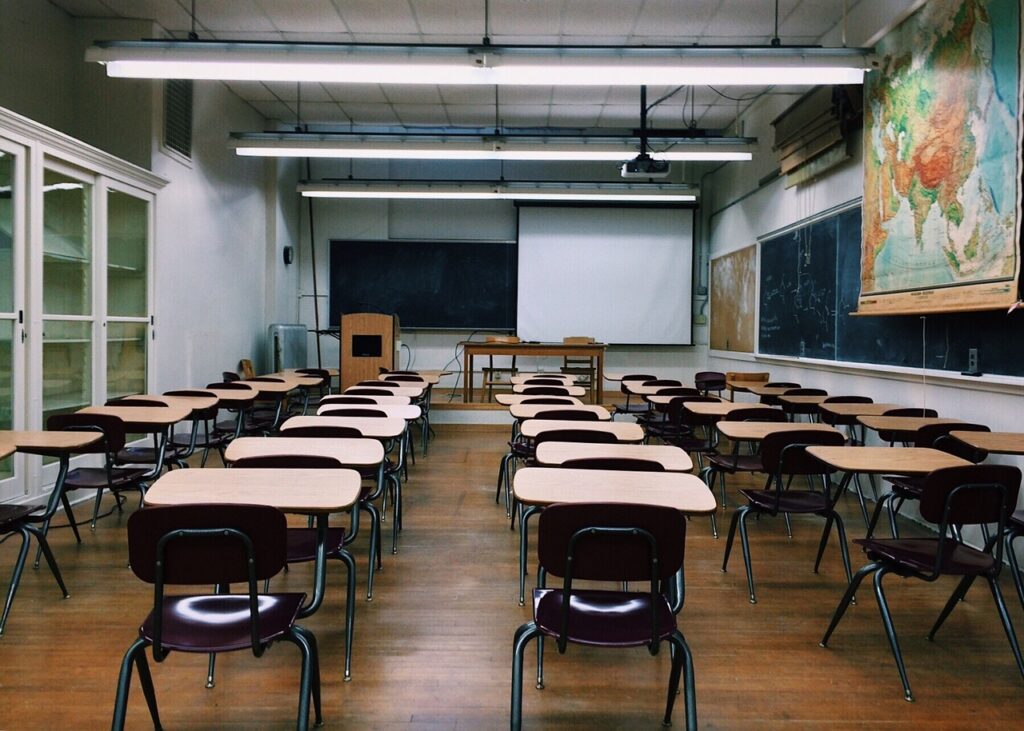Schools are bustling hubs of learning, creativity, and collaboration. But let’s face it—they’re also ground zero for germs. From sticky desks to crowded hallways, maintaining a clean and safe environment is a daily challenge. As someone who’s been in the cleaning business for over 20 years, I can tell you that keeping a school clean isn’t just about appearances—it’s about protecting students, teachers, and staff.
So, if you’re wondering how to set hygiene and safety standards for your school cleaning services in Schaumburg, you’re in the right place. Let’s dive into what you need to know to keep those germs at bay and create a safe space for learning.
Why Cleanliness Matters in Schools
Why is school cleaning such a big deal? It’s simple: a clean school isn’t just healthier; it’s also more productive.
- Better Attendance: A clean environment means fewer germs and illnesses, which translates to fewer sick days for students and staff.
- Improved Focus: Cluttered or dirty classrooms can be distracting. Clean spaces help students stay focused on their studies.
- Safety First: Regular cleaning reduces slip-and-fall hazards, ensuring everyone stays safe.
Think of cleanliness as the foundation of a successful school day.
also read: Why Schools Need Reliable Janitorial Services?
Areas That Need Special Attention
When it comes to school cleaning, some areas demand extra TLC. Here’s where to focus your efforts:
1. Classrooms
Classrooms are where kids spend most of their day, which means they’re also hotspots for germs. Wipe down desks, chairs, and high-touch areas like door handles daily. Don’t forget to sanitize shared supplies like pencils, rulers, and art tools.
2. Restrooms
Let’s be real—school restrooms can get messy fast. Clean and disinfect restrooms multiple times a day, especially high-touch surfaces like faucets, soap dispensers, and door handles. Make sure you’re using hospital-grade disinfectants for maximum safety.
3. Cafeterias and Kitchens
Food preparation and eating areas must meet high standards of hygiene. Floors should be mopped, tables wiped, and trash emptied daily. Deep-clean kitchen equipment like ovens and refrigerators weekly to prevent bacteria buildup.
4. Hallways and Entrances
Hallways are high-traffic zones that can quickly accumulate dirt and debris. Regularly sweep, mop, and polish floors. For entrances, consider using floor mats to trap dirt before it spreads.
5. Gymnasiums and Play Areas
Sports equipment, gym mats, and locker rooms need regular cleaning to prevent the spread of bacteria and odors. Use disinfectant sprays on gym equipment and make sure floors are mopped frequently.
Hygiene and Safety Standards for Schools
Schaumburg schools need to follow strict hygiene and safety standards. Here’s how to ensure you’re meeting (or exceeding) those benchmarks:
1. Use EPA-Approved Cleaning Products
Choose cleaning products that are EPA-approved to fight germs effectively. Look for disinfectants that are safe for use in schools but strong enough to kill bacteria and viruses.
2. Train Your Cleaning Staff
Proper training is essential for effective cleaning. Make sure your staff knows:
- How to use cleaning products safely.
- Which areas need extra attention.
- The importance of using gloves, masks, and other PPE.
3. Create a Cleaning Schedule
Consistency is key. Develop a cleaning schedule that outlines daily, weekly, and monthly tasks. For example:
- Daily: Wipe down high-touch surfaces, empty trash, and mop floors.
- Weekly: Deep-clean restrooms, sanitize desks, and vacuum carpets.
- Monthly: Wash windows, polish floors, and inspect for maintenance issues.
4. Focus on Air Quality
Good air quality is a hidden hero in maintaining a healthy school environment. Regularly clean HVAC systems and replace air filters to reduce allergens and airborne germs. Consider investing in air purifiers for high-traffic areas.
The Role of Students and Staff
Keeping a school clean isn’t just the cleaning team’s responsibility—it’s a team effort. Encourage students and staff to pitch in:
- Teach Hygiene: Educate students about the importance of handwashing and keeping their personal spaces tidy.
- Provide Supplies: Make it easy for students and teachers to access disinfectant wipes and hand sanitizers.
- Set an Example: Teachers and staff should model good hygiene practices, like wiping down their workspaces regularly.
How Often Should Schools Be Cleaned?
The frequency of cleaning depends on the area and its use:
- Daily: Classrooms, restrooms, and high-touch surfaces.
- Weekly: Gyms, cafeterias, and hallways.
- Monthly: Windows, HVAC systems, and deep-cleaning carpets or upholstery.
During flu season or outbreaks, ramp up the cleaning schedule to keep germs under control.
Common Mistakes to Avoid
Even with the best intentions, it’s easy to make cleaning mistakes. Here are a few to watch out for:
- Using the Wrong Products: Not all cleaners are suitable for all surfaces. Read labels carefully!
- Skipping High-Touch Areas: Door handles, light switches, and keyboards often get overlooked.
- Not Ventilating Rooms: Always ventilate rooms after cleaning to reduce chemical odors and improve air quality.
Cleanliness isn’t just a box to check—it’s a cornerstone of a safe and thriving school environment. By focusing on hygiene, Schaumburg schools can create a space where students and staff feel comfortable, focused, and ready to learn.
Need help keeping your school spotless? With over two decades of experience, my team knows what it takes to maintain high cleaning standards in educational facilities. Let’s work together to keep your school shining!

